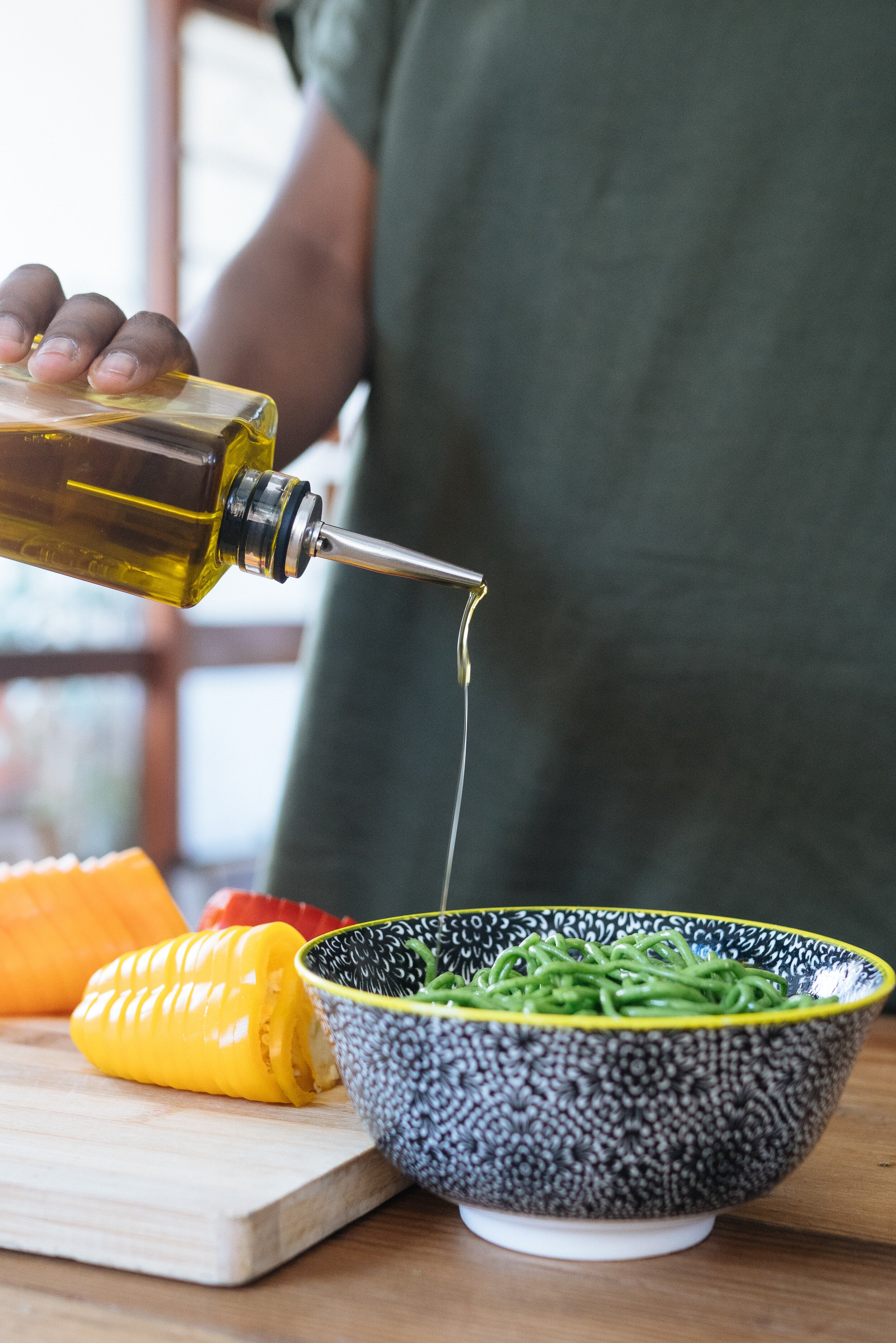You’re in the grocery store shopping for this week’s food items. But have you ever had a second thought about the ingredients listed on the food items you’re buying?
Have you ever wondered what all those ingredients were listed on the food packaging? It’s very overwhelming especially if you don’t know anything about unfamiliar food ingredient terms, or how our bodies react to them.
In this article, you’ll learn …
How to Read Food Label Ingredients Listed on Food Packaging
Okay, so back to your grocery store shopping experience …
Now, when you first pick up a food product in the grocery aisle, either you quickly toss it into your cart or if you're a bit more health-conscious, you read the nutritional facts listed on the package label first.
This is a smart move since you'll want to know what ingredients make up the food that you're planning on eating. You also want to know about its nutritional value.
If you're a health-conscious shopper, you can easily consume more nutrient-dense foods when you understand how to read the nutritional facts listed on the label.
But one thing is for sure, food packaging labels are intentionally deceptive. So, to make sure you're making the right choices at the grocery store, you need to understand food labeling and learn how to read ingredients.
The most important thing to know about reading food packaging is that just because something says “organic” doesn’t mean it is, And just because a food product has a low-calorie count on the label doesn’t mean it can be treated as an unlimited portion of calories.
Understanding food labels can seem a little daunting if you aren't aware of the dynamics of how food labels work. What may appear as a simple read may not be as straightforward as you may have thought.
But no worries, in this article I'll clarify everything for you so that you can understand food labels in order to make healthier choices for you and your family.
Steps to Reading & Understanding Food Labels
When you look at any food label, pay close attention to the number of calories listed per serving. Oftentimes, what you think you're consuming in a single serving, is actually far more than what you would expect.
What I mean is this ...
When you look at the number of calories and nutrients that are listed in a single serving, the size of each serving is most oftentimes a lot smaller than what you would most likely consume at any one time.
For example, if we're talking about a bottle of juice, you would think that one serving makes up that one bottle of juice. However, what is usually the case is that one serving according to the label is only including half of the bottle of juice!
The same goes for a bowl of cereal. The label may read 2-3 servings (or 2-3 cups) make up a single serving of what's listed. However, the average person may actually consume 6 cups of cereal in a single serving meaning that the sugar content listed would actually be much higher than they had initially thought they were consuming (because they were actually consuming more than the serving size portion mentioned on the label).
This is why it's important to pay close attention to the calories per single serving (and know how much a single serving is). This will allow you to know how many calories you're actually consuming if indeed you do eat the whole package ie., a bag of chips or a pack of cookies etc.
Being educated in reading food labels is critically important, especially if you're trying to improve your eating habits or want to lose weight.
So, knowing all of that …
Food Labels … What You Should Know
Here are some other things you may want to pay close attention to:
When reading any food package ingredient listing, limit the number of trans fats, salt (aka sodium), sugar, and saturated fat content.
Sugar - Sugar, can include natural and added sugars. It’s best to opt for natural sugars especially those derived from fruit. White refined sugar is the one you should try to stay away from or at least limit its intake as much as possible. It is bound together with an equal split of glucose and fructose. You will often see these terms written on processed food labels. It’s best to avoid purchasing products with these ingredients - especially if they are the first ingredients listed. When you see an ingredient that is one of the first listed, that means that the food item you’re purchasing has a high level of that ingredient over the other ingredients listed.
Sugar is a common man-made ingredient that we most often consume daily. You can find it in soft drinks, juices, sweet desserts, and candy (just to name a few). However, too much sugar can result in long-term health problems. Basically, here is how it works... Sugar is made up of two molecules which are glucose and fructose. Sugar is harmless if consumed in small amounts. However, too much can be very problematic to your overall health.
Instead of adding regular refined white table sugar to your meals, why not choose a healthier alternative like agave, honey, maple syrup, or natural sugar cane.
The W orldHealth Org advises adults and children to maintain an active, healthy lifestyle with regular physical activity and a nutritious diet. This includes limiting the intake of free sugars (total sugars minus fiber) to less than 10% of their total energy intake (known as the 10% guideline). However, did you realize just how much sugar is in some products that we don’t think of as “sweets” or as containing sugar?
Saturated fats - Saturated fats are found in meat, whip cream, cheese, butter, and other dairy products. This type of fat contains high levels of cholesterol which increases your risk of heart disease and other health problems if you consume too much. Opting for unsaturated fats is a much better choice. And although saturated fats are not as bad as trans fats, it is not the best option when it comes to your health. So if you can, choose unsaturated fats which help to reduce the risk of heart disease, while reducing cholesterol in the body. Healthier fats like nuts or avocados are a much better choice.
Trans fats - Trans-fat or refined polyunsaturated fat will increase inflammation in your body, and make it harder for you to lose weight simply because it’s not naturally derived, but rather it’s a man-made fat. So, read all food packaging carefully before you buy! Avoid consuming processed foods like pastries, snack bars, commercially prepared fried foods, or any food label with trans-fats listed. There is zero nutritional value. Trans-fats do more harm than good.
Sodium - Sodium also known as salt is an essential mineral for life. It has many benefits including aiding in sending impulses through nerves and is helpful in the functioning of muscles. Although there are health benefits to sodium or salt in your diet, too much salt can cause more harm than good.
According to the American Heart Association, no individual should consume more than 2,300 milligrams (mg) of sodium (salt) per day. Ideally, if you could try to consume less, it's actually recommended that you do not go beyond 1,500 mg per day for the average adult.
If you consume too much salt per day on a regular basis, this can lead to health problems including kidney disease, osteoporosis, heart disease, stomach problems like cancer of the stomach, and stroke.
Although these are extreme cases, if you consume too much salt regularly and for a long period of time, it can add up and lead to health problems like those mentioned here.
If you stick to not having more than 1,500 mg per day or less, you should be fine. However, it's best to have less in order to lessen the chances that you will develop a health issue from consuming too much.
Rid Your Body of Toxins
One way to flush your body of toxins and heightened levels of salt, while adding extra hydration to your body is to drink lots of water.
A splash of lemon juice or a pinch of apple cider vinegar diluted in your water can be extra beneficial - especially being that they aid in intestinal and digestive health as well as having so many other benefits.
Remember, read your food labels carefully to ensure that what you're buying does not have high levels of salt. Many people fail to realize how much salt can be contained in your average loaf of bread or box of cereal.
Be mindful of what you eat and be careful to make healthier food choices that will benefit your health in years to come.
Choose products carefully by looking at different brands and their ingredient labels to make the most informed choice for your overall health.
———
Sources: https://www.heart.org/en/healthy-living/healthy-eating/eat-smart/sodium/how-much-sodium-should-i-eat-per-day
https://www.livescience.com/36256-salt-bad-health.html
https://www.msn.com/en-in/health/health-news/how-to-flush-out-salt-bloat-fast/ar-AAJsh3R
https://www.who.int/elena/titles/guidance_summaries/sugars_intake/en/




























